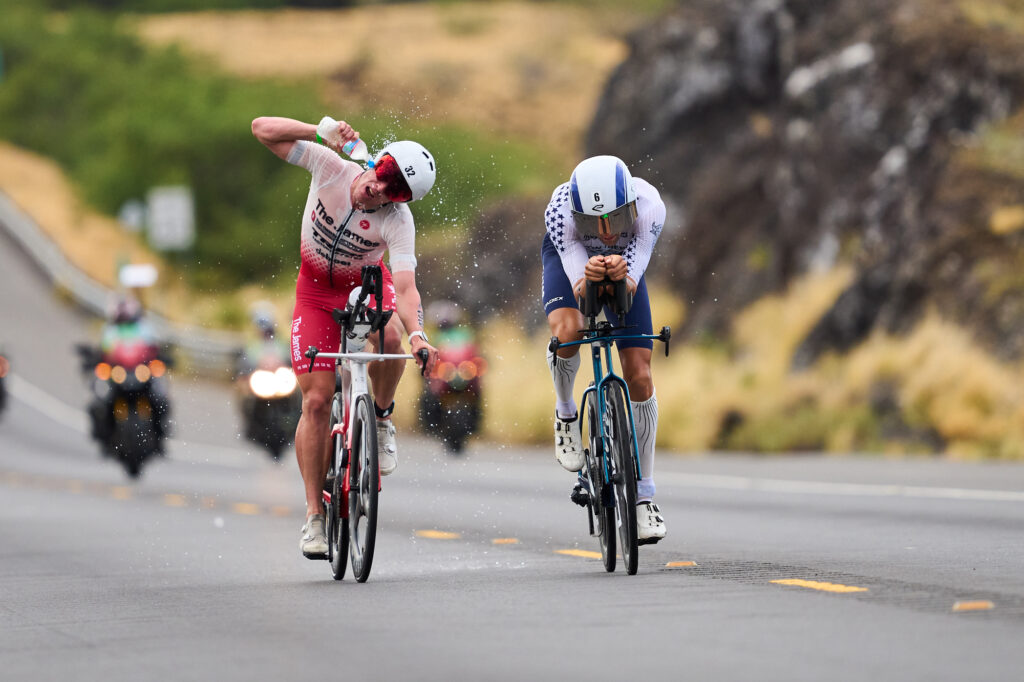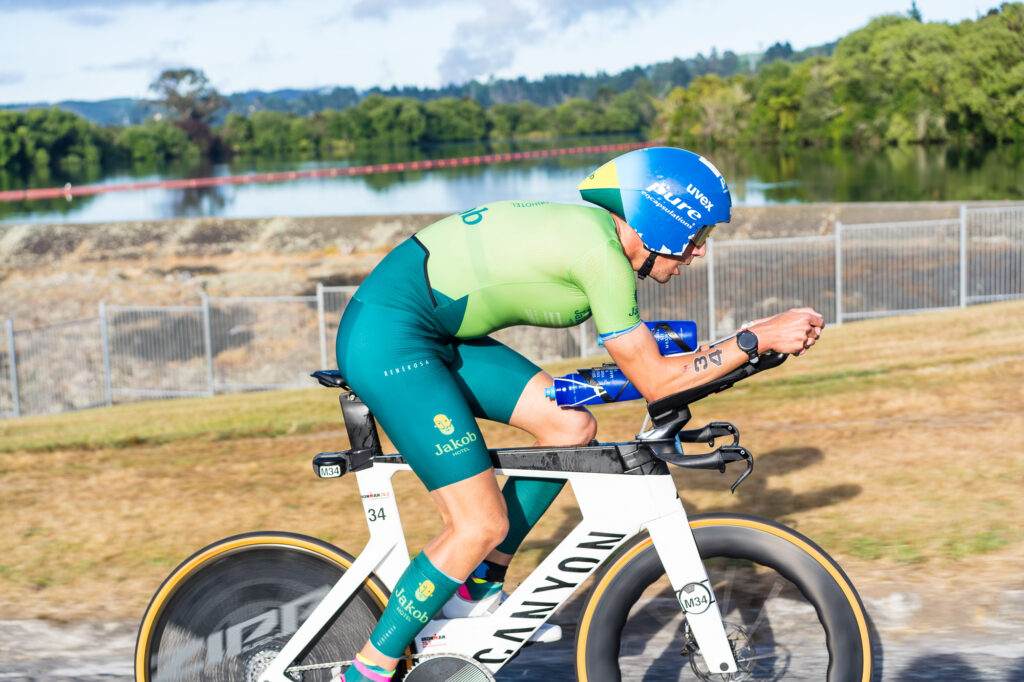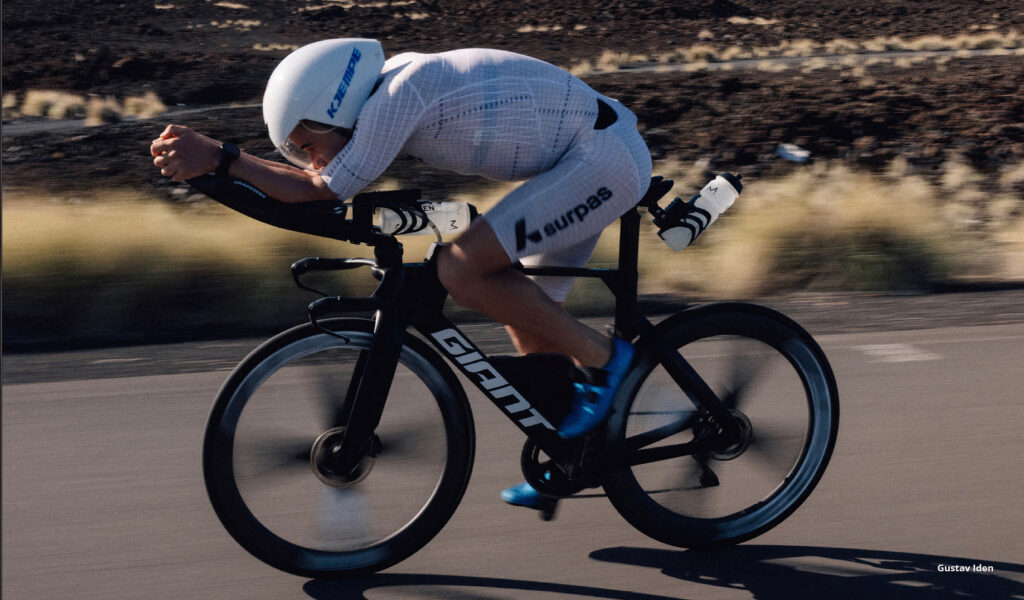Originally published at: IRONMAN Tweaks Drafting, Cycling Equipment Rules for 2025 - Slowtwitch News
IRONMAN has released its 2025 Global Competition Rules, in advance of the ruleset taking effect in just over three weeks on March 17, 2025. The first race to be contested under the revised ruleset will be IRONMAN 70.3 Geelong on March 23, which also happens to be the kickoff of the 2025 IRONMAN Pro Series.
The changes come as IRONMAN continues its rules harmonization project with World Triathlon, and to a lesser extent, the rulesets from the governing bodies of the three individual sports that make up triathlon.
Blue Card Time Penalties Reduced

Blue card penalties, which include all bike positional fouls like drafting, slotting, side-by-side riding, and failure to drop back, have been reduced in time from five minutes to two minutes (for IRONMAN 70.3 events) or three minutes (for IRONMAN events). This rule change is to align specifically with World Triathlon’s specifications for penalties at these respective distances.
The other major blue card penalty is intentional littering. As has been the case for years, three blue card penalties in a single event results in disqualification.
Bike Equipment Rule Changes for Bottles and Aerobar Length
In response to the growing use of multiple water bottles on the front of bikes in an attempt to reduce drag, IRONMAN has fine-tuned its rules regarding bottle placement and the maximum combined carrying capacity.
Bottles on the front-end of the bike are now limited to a maximum combined volume of two liters. The ruleset defines these front hydration carriers as “mounted to components attached to the bike that rotate around the steering axis (e.g., cockpit extensions, top tube, headset, stem, head tube).” Hydration systems that are either internal bladders within a frame, or otherwise located within the frame triangle of a bike, are excluded from the rule.

Let’s use this image from IRONMAN 70.3 Worlds as the example. The two round bottles there may not have a capacity greater than two liters. The Canyon specific hydration system, seen emerging from the stem, does not count toward that two liter capacity. But if there were, say, a third bottle, mounted to the top tube bosses somehow? That would count.
It’s also not just the front hydration regulated now, though. Rear hydration systems are now limited to a maximum of two bottles. Bottles are limited to an individual capacity of one liter. In told, between front and rear hydration carriers, you can max out at four liters carried this way. Violations result in disqualification from the race.
Moving back to the front end of the bike, aerobar length has been regulated for the first time. Rule 5.3(c) states that “aero bar extensions must not extend beyond the leading edge of the front wheel.” Violations, like with hydration carriers, result in disqualification.

Looking at Gustav Iden, here, it would appear this specific set-up would run afoul of these limits.
It does bring an additional wrinkle to how bike manufacturers may wind up adjusting geometries of frames to potentially bring riders back behind the leading edge of the front wheel. It’s been a discussion many have been having in our forum for a while. Perhaps it is indeed time for a new bike geometry to match these positions.
All of the above rules are now subject to the discretion of the Head Referee, per Rule 11.01(d). This includes violations “before, during, and/or after the Race.” That, in theory, could open the door to a viewer of an event tipping off a Referee to an equipment violation, which is how the USATF 100 mile Road Race Champion was disqualified for wearing a pair of illegal HOKA Skyward X shoes. Equipment is also specifically called out as being subject to protest under Rule 3.06(d) — equipment, athlete eligibility, and athlete conduct all may be protested.
Other Smaller Changes
Some quick hit items:
- Neoprene swim caps, which used to be allowed at any time, are now only permitted during wetsuit legal swims.
- Children and animals have been added to the list of items that are not allowed to enter the finishing chute. Flags, signs, or giant cardboard checks are still not prohibited by rule.
- Penalties earned in transition are now served at the spot of the foul.
- Penalties that have been already served are not able to be protested. This is along with protests for a penalty determined to be a “judgment call” (read as: most bike position fouls are considered judgment calls.)